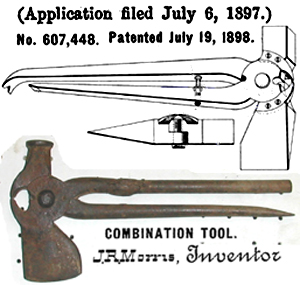The Fort Dodge Messenger: June 16, 1903
Webster City Meets Heavy Loss
Northwestern Felt Show Company’s Plant Burned to the Ground Monday Night.
The City’s Leading Industry.
Company Was Capitalized at $100,000 and Employed 105 People – Insurance was Only $36,000, Making Loss Reach Fully $56,000.
Webster City, June 16 – The plant and stock of of the Northwestern Felt Shoe company burned here on Monday night about midnight. The fire started int eh basement and spread before effective work could be done by the fire department. This morning nothing but the smoking ruins remain of what was a prosperous industry employing one hundred thousand dollars of capital, using the labor of 105 persons in the plant, aside from several hundred who worked on the products of the factory in their homes. There was $36,000 ($862,181 in 2010 dollars) of insurance only, and the net loss will be about $56,000 ($1,341,170).
It was a most unfortunate blow to the leading industry of Webster City. The institution was getting on a splendid foundation and looked forward to a steadily growing business. It is too early yet to know what the policy of the stockholders will be in the matter of rebuilding the plant.
The company was working into a large and increasing business and had every prospect for a successful season. It had only recently raised its capital stock to $100,000 ($2,394,94) of which $75,000 ($1,796,211) was paid up. As a result of the fire, George (last name unreadable), who came from New York and invested his capital in the plant, is left practically without a dollar, and the loss is almost equally heavy upon other stock holders.
The loss is divided as follows:
| On stock and leather | $68,000 | $1,628,564 |
| On machinery | 12,000 | 287,393 |
| On building | 12,000 | 287,393 |
| Total | $92,000 | $2,203,352 |
The cause of the fire is a mystery. When discovered by the night watchman it had secured a good start in the basement. The building is situated across the river on the east side, and has no city water protection. The volunteer department did its best, but could not check the flames. The machinery fell thru from the third story to the basement, and the building was left an utter wreck. Only the books and a few minor articles could be saved. The company has $20,000 ($478,989) of shoes stored at other places about town, all of which are contracted to be delivered by September 1.
The loss which the fire will occasion to Webster City is evidenced by the fact that the weekly pay roll amounted to $700 ($16,764).
(Editor’s note: The inflation calculator converts the following amounts from 1903 dollars to 2010 dollars: $700 to $16,764;$12,000 to $287,393; $20,000 to $478,989; $36,000 to $862,181;$56,000 to $1,341,170; $68,000 to $1,628,564;$75,000 to $1,796,211; $92,000 to $2,203,352; $100,000 to $2,394,948. I have also put these amounts in the text in italics for easy reference.)



